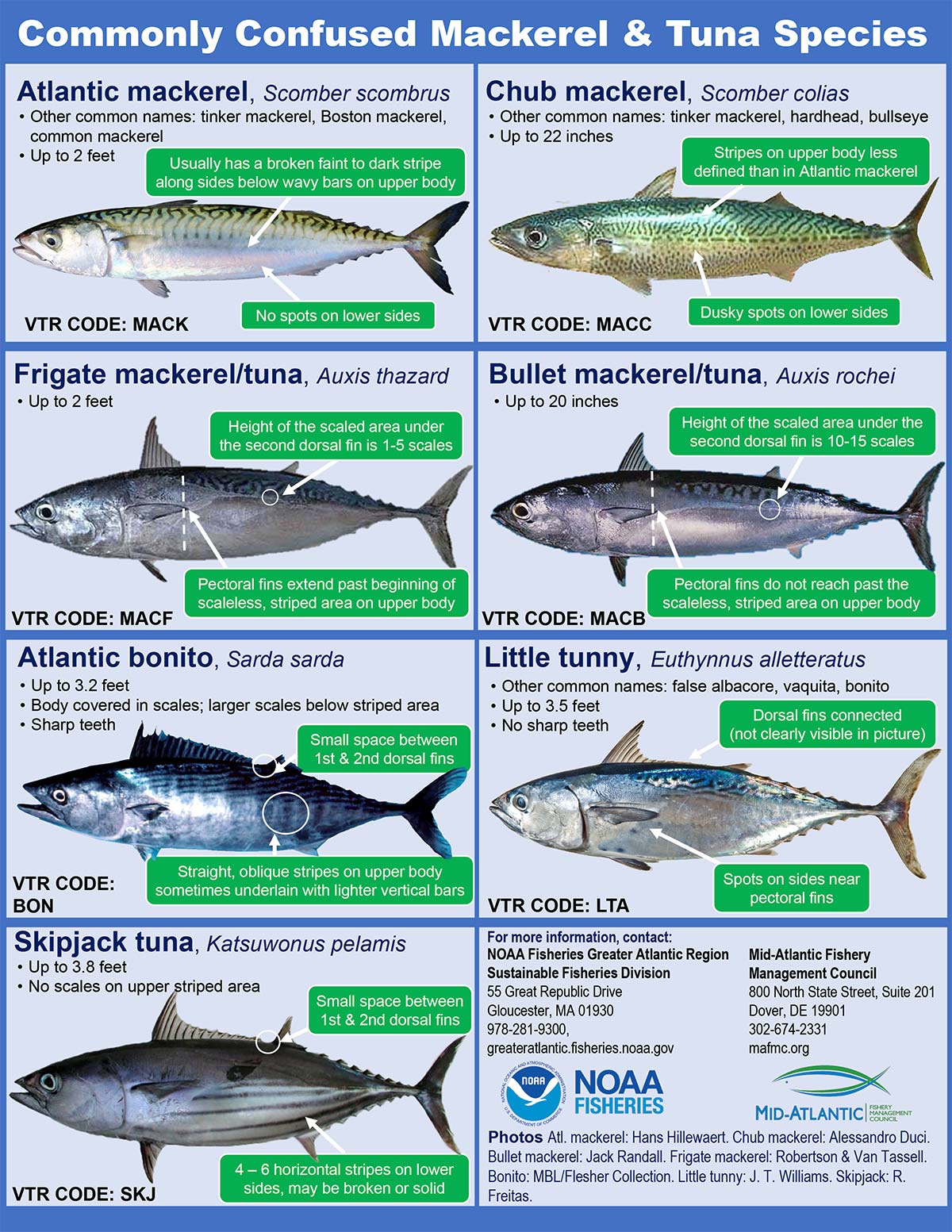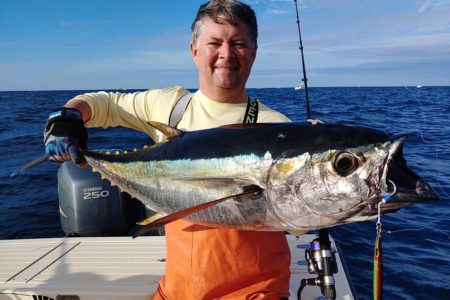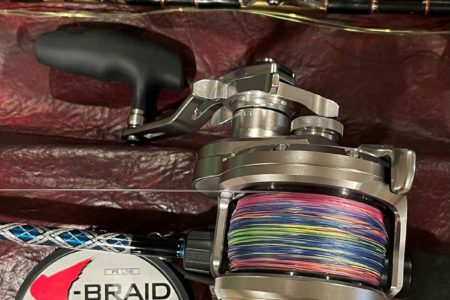
I say bonito, you say bonita. You say bullet mack I say frigate mack. Small pelagics in the scombridae family of tuna and mackerel can be confusing when encountered in our midrange and offshore waters, but there are telltale differences to help you identify each species. Here’s a quick ID chart to help figure out what you’ve caught!
SKIPJACK TUNA: (katsuwonus pelamis) aka skippies, oceanic bonito, aku. In the Thunnini family, probably the least encountered of the Scombridae small pelagics in our waters, skipjack are most easily identified by their striking purplish scrawled hue on their upper back flanks, while the lower silvery flanks have four to six longitudinal, near horizontal black lines that run on the lower silvery/white flank. Mostly a true pelagic, usually they are not encountered closer than 40 miles and can dive down to depths of 850 feet. They can grow up to 36 inches and have a life span of about 7 years. Skippies make great marlin baits and have been known to be very edible.
LITTLE TUNNY: (euthynnus alletteratus) aka false albacore, fat albert, albie, and the most mis-stated misnomer, bonita, with an “A” (not to be confused or called a bonito, with an “O”). Little tunny betray their name as they are strangely more closely related to the mackerel family rather than being in the Thunnus designation. Schools can move right in as close as the undertow in the surf, and be found far offshore in the canyons. Identified by an intricate scrawled pattern on an olive hued upper flank from the dorsal fin back to the caudal tail fin, plus a series of three to seven dark black spots lie around the pelvic and pectoral fin area. The belly is generally a bright white. Albies are terrible for table fare but can make great marlin baits as well as shark baits as their oily flesh has an extremely fishy smell and taste. Tunny can range up to the 20-pound mark but are most commonly in the 5- to 10-pound range.
ATLANTIC BONITO: (sarda sarda) aka Bones. Defined by their shimmering silver sides with diagonal black lines through the flanks and an olive greenish hue on their backs along with small sharp teeth. Bonito can withstand colder water temps and many times can be found in the nearshore waters from the surf out to 15 or 20 miles through late October. Bones are actually quite edible as anglers make poke bowls while cubing their pinkish/red flesh. Bonito can range up to 6 or 7 pounds, but more generally average 2 to 4 pounds. Lightning quick and most travel in large schools.
FRIGATE VS. BULLET MACKEREL: These two mackerel species are so closely similar in appearance they are usually interchanged, wrongfully so, when referencing them. The frigate mackerel (auxis thazard thazard) is almost identical to the bullet mackerel (auxis rochei rochei). They both have an unusually big eye that actually resembles a bigeye tuna type of shape and both share a scrawled, splotchy upper back and a severe dorsal fin that looks like a tight sail at full mast. However, the one identifying factor can be explained by the position of the pectoral fin. In a bullet mackerel, the pectoral fin will overlap the anterior margin of the unscaled area above the corselet whereas in the frigate mackerel, it will not as the pectoral fin is shorter. Simply put, if the pectoral fin extends to where the scrawling of the upper back is, it’s a bullet mack. If it comes up short, it’s a frigate mackerel. You can usually find these guys offshore from July through September, but they do move inshore on occasion to confuse surf anglers.




